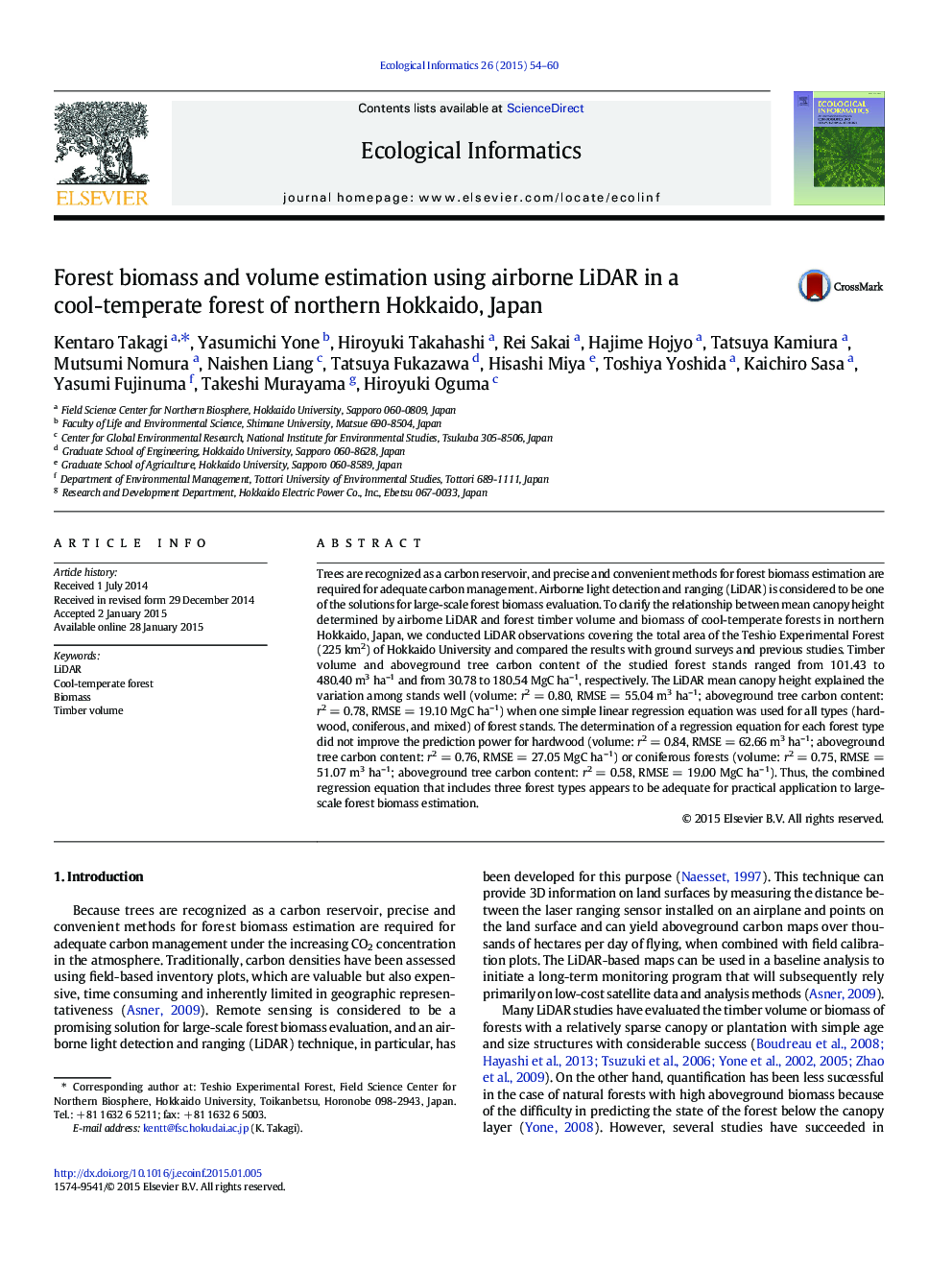| Article ID | Journal | Published Year | Pages | File Type |
|---|---|---|---|---|
| 4374826 | Ecological Informatics | 2015 | 7 Pages |
Abstract
Trees are recognized as a carbon reservoir, and precise and convenient methods for forest biomass estimation are required for adequate carbon management. Airborne light detection and ranging (LiDAR) is considered to be one of the solutions for large-scale forest biomass evaluation. To clarify the relationship between mean canopy height determined by airborne LiDAR and forest timber volume and biomass of cool-temperate forests in northern Hokkaido, Japan, we conducted LiDAR observations covering the total area of the Teshio Experimental Forest (225Â km2) of Hokkaido University and compared the results with ground surveys and previous studies. Timber volume and aboveground tree carbon content of the studied forest stands ranged from 101.43 to 480.40Â m3Â ha-1 and from 30.78 to 180.54Â MgC ha-1, respectively. The LiDAR mean canopy height explained the variation among stands well (volume: r2Â =Â 0.80, RMSEÂ =Â 55.04Â m3Â ha-1; aboveground tree carbon content: r2Â =Â 0.78, RMSEÂ =Â 19.10Â MgC ha-1) when one simple linear regression equation was used for all types (hardwood, coniferous, and mixed) of forest stands. The determination of a regression equation for each forest type did not improve the prediction power for hardwood (volume: r2Â =Â 0.84, RMSEÂ =Â 62.66Â m3Â ha-1; aboveground tree carbon content: r2Â =Â 0.76, RMSEÂ =Â 27.05Â MgC ha-1) or coniferous forests (volume: r2Â =Â 0.75, RMSEÂ =Â 51.07Â m3Â ha-1; aboveground tree carbon content: r2Â =Â 0.58, RMSEÂ =Â 19.00Â MgC ha-1). Thus, the combined regression equation that includes three forest types appears to be adequate for practical application to large-scale forest biomass estimation.
Related Topics
Life Sciences
Agricultural and Biological Sciences
Ecology, Evolution, Behavior and Systematics
Authors
Kentaro Takagi, Yasumichi Yone, Hiroyuki Takahashi, Rei Sakai, Hajime Hojyo, Tatsuya Kamiura, Mutsumi Nomura, Naishen Liang, Tatsuya Fukazawa, Hisashi Miya, Toshiya Yoshida, Kaichiro Sasa, Yasumi Fujinuma, Takeshi Murayama, Hiroyuki Oguma,
